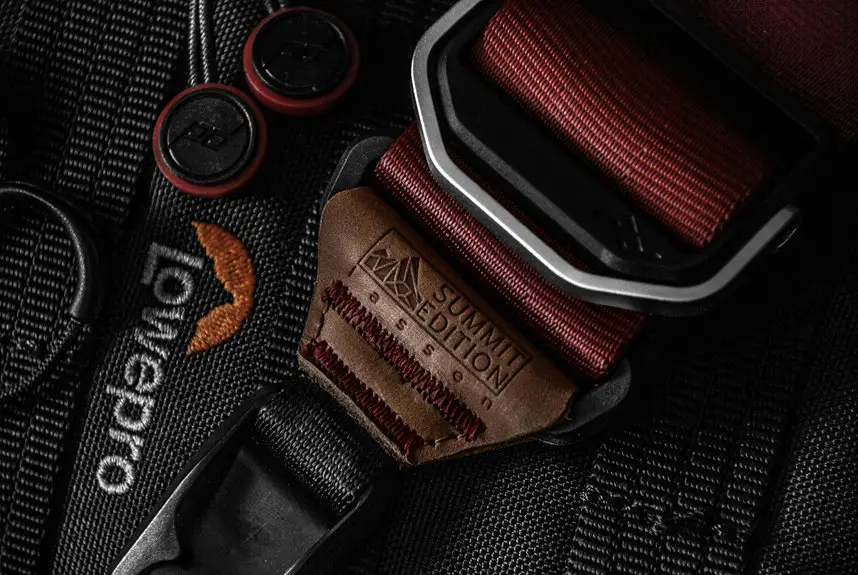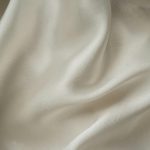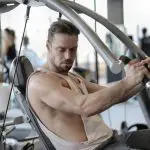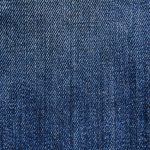Kevlar fabric is a super-strong, lightweight material designed to protect you while staying flexible. Its unique molecular structure and tight fiber alignment give it incredible strength—five times stronger than steel by weight—making it perfect for bulletproof vests, helmets, and protective gear. It’s also heat and chemical-resistant, so it holds up under tough conditions. Caring for Kevlar is simple, ensuring it lasts long. Discover how its manufacturing process and innovations make it essential for your safety and performance.
Table of Contents
Key Takeaways
- Kevlar is a lightweight, high-strength fabric made from tightly packed polymer chains with strong hydrogen bonds.
- It offers exceptional durability, being five times stronger than steel by weight and resistant to cuts and abrasions.
- Heat and chemical resistance make Kevlar reliable in extreme conditions and harsh environments.
- Commonly used in bulletproof vests, helmets, and protective gear across military, law enforcement, and sports.
- Proper care, like gentle cleaning and avoiding harsh chemicals, ensures Kevlar maintains its strength and longevity.
The Science Behind Kevlar Fabric
Although you mightn’t see it, Kevlar fabric owes its incredible strength to a unique molecular structure. When you look closer, you’ll find that Kevlar’s molecules form long chains that align parallel to each other, creating tightly packed fibers.
This alignment, combined with strong hydrogen bonds between chains, gives Kevlar its remarkable tensile strength. You’ll notice that these bonds work together to distribute stress evenly across the material, making it resistant to stretching and breaking.
Unlike many fabrics, Kevlar’s structure allows it to absorb and disperse energy efficiently, which is why it’s so durable. By understanding this molecular setup, you can appreciate why Kevlar performs exceptionally well in demanding applications where strength and reliability matter most.
Key Properties That Set Kevlar Apart
You’ll notice Kevlar stands out because of its exceptional strength and durability, making it tough to beat.
It’s also lightweight and flexible, so it won’t weigh you down or restrict movement.
Plus, its heat and chemical resistance make it reliable in extreme conditions.
Exceptional Strength and Durability
Kevlar’s exceptional strength and durability make it a standout material in industries requiring high-performance protection. When you use Kevlar fabric, you get a fiber that’s five times stronger than steel on an equal weight basis.
This incredible strength means it can withstand extreme forces without breaking, so it’s perfect for body armor, helmets, and protective gear. You’ll also appreciate its resistance to abrasion and cutting, which keeps the material intact even in harsh conditions.
Kevlar’s durability extends its lifespan, reducing the need for frequent replacements. Whether you’re relying on it for safety or industrial applications, Kevlar guarantees long-lasting performance.
Lightweight and Flexible
While maintaining its impressive strength, Kevlar remains remarkably lightweight and flexible, making it ideal for applications where mobility matters. You won’t feel weighed down or restricted when wearing Kevlar gear, whether it’s protective clothing or sports equipment. Its flexibility allows it to conform to your movements, enhancing comfort without compromising protection.
| Property | Kevlar Fabric | Traditional Materials |
|---|---|---|
| Weight | Light (about 1.44 g/cm³) | Heavier (cotton ~1.54 g/cm³) |
| Flexibility | High, bends easily | Low, tends to be stiff |
| Comfort in Use | Adapts to body shape | Less adaptive, bulky |
This balance between strength, lightness, and flexibility sets Kevlar apart for dynamic, active use.
Heat and Chemical Resistance
Because it can withstand extreme temperatures and resist many harsh chemicals, Kevlar offers protection that goes beyond physical strength.
When you use Kevlar, you get fabric that stays stable even in intense heat, making it ideal for firefighting gear or industrial applications. Unlike other materials, Kevlar won’t melt or degrade easily, so it keeps you safe when exposure to flames or high heat is a risk.
Plus, it resists acids, solvents, and oils, meaning it maintains its integrity in environments where chemicals are present. This durability helps you trust Kevlar gear in hazardous settings because it won’t break down quickly.
In short, Kevlar’s heat and chemical resistance add a critical layer of safety and reliability that you can depend on.
Common Uses of Kevlar in Everyday Life
You’ll find Kevlar in many protective gear items, like bulletproof vests and helmets, keeping you safe in dangerous situations.
It’s also used in automotive and aerospace industries to strengthen parts without adding extra weight.
Understanding these everyday uses shows how versatile and essential Kevlar really is.
Protective Gear Applications
Although you mightn’t see Kevlar fabric every day, it plays an essential role in keeping people safe through various protective gear. When you wear a motorcycle jacket or gloves, Kevlar helps protect you from road rash and injuries during accidents.
Law enforcement officers rely on Kevlar vests to shield themselves from bullets and stab wounds, giving them peace of mind on the job. Firefighters and industrial workers use Kevlar-based helmets and gloves to withstand extreme heat and cuts.
Even sports enthusiasts benefit from Kevlar in protective padding and helmets, reducing the risk of injury during high-impact activities. By incorporating Kevlar into these items, manufacturers make sure you stay safe without sacrificing comfort or mobility.
Automotive and Aerospace Uses
Kevlar fabric boosts performance and safety in both automotive and aerospace industries. When you use Kevlar, you get lightweight strength that enhances durability without adding bulk.
Here are four key ways Kevlar improves these sectors:
- Tire reinforcement – Kevlar strengthens tires, making them more resistant to punctures and wear.
- Brake pads – It provides heat resistance and durability, ensuring reliable braking performance.
- Aircraft components – Kevlar reduces weight while maintaining structural integrity, improving fuel efficiency.
- Interior panels and seats – It offers added protection and comfort with lightweight impact resistance.
Advantages of Kevlar Over Traditional Materials
When you compare traditional materials like steel and nylon, you’ll find that Kevlar offers remarkable strength without the heavy weight. This means you get superior durability and protection without the burden of extra mass.
Kevlar’s high tensile strength makes it resistant to cuts, abrasions, and impacts, outperforming many conventional fabrics. Unlike steel, Kevlar doesn’t rust or corrode, so it lasts longer in harsh environments.
Its flexibility also lets you design gear that moves with you, unlike rigid metals. Plus, Kevlar resists heat and chemical damage better than many traditional materials.
Whether you’re looking for lightweight armor or tough industrial fabrics, Kevlar gives you a combination of toughness, longevity, and comfort that traditional materials just can’t match.
How Kevlar Is Manufactured and Processed
While the high-performance qualities of Kevlar depend on its molecular structure, you might be surprised to learn how this fabric is actually made.
The process involves precise steps to guarantee its strength and durability:
- Polymerization – You start by combining monomers to create long polymer chains called poly-paraphenylene terephthalamide.
- Spinning – The polymer solution is spun into fibers through a process called wet spinning, where it solidifies in a chemical bath.
- Drawing – You stretch the fibers to align the molecules, boosting tensile strength.
- Weaving – Finally, these fibers are woven into fabric, ready for use in protective gear and more.
Each step is essential to making Kevlar the tough, lightweight fabric you rely on.
Innovations and Future Trends in Kevlar Technology
As technology advances, researchers are constantly pushing the limits of what this fabric can do, developing new variants that are stronger, lighter, and more heat-resistant. You’ll see Kevlar integrated with nanomaterials for enhanced durability and flexibility. Innovations also focus on making Kevlar more sustainable by improving recycling methods. These trends guarantee Kevlar stays relevant in industries like aerospace, automotive, and personal protection.
| Innovation | Benefit | Application |
|---|---|---|
| Nanocomposite Kevlar | Increased strength | Military gear, aerospace |
| Lightweight variants | Enhanced comfort | Sports equipment |
| Sustainable Kevlar | Eco-friendly production | Automotive, construction |
Care and Maintenance Tips for Kevlar Products
Although Kevlar is known for its durability, you still need to handle it with care to maintain its protective qualities. Proper care guarantees your Kevlar products last longer and perform effectively.
Here’s how you can keep them in top shape:
- Clean Gently: Use mild soap and cold water; avoid harsh chemicals or bleach that can weaken fibers.
- Air Dry: Let your Kevlar gear dry naturally, away from direct sunlight or heat sources to prevent damage.
- Store Properly: Keep items in a cool, dry place, avoiding compression or folding that might cause permanent creases.
- Inspect Regularly: Check for signs of wear or damage, and replace products if their integrity is compromised.
Frequently Asked Questions
Can Kevlar Fabric Be Recycled or Repurposed?
You can recycle or repurpose Kevlar fabric, but it’s tricky due to its strong fibers. Many companies find innovative ways to reuse it in products like protective gear or composites, reducing waste and extending its life.
Is Kevlar Safe for People With Sensitive Skin?
You might think Kevlar’s rough armor would scratch your skin, but it’s actually quite safe for sensitive types. Just don’t wear it like a shirt—its strength shines in protection, not in softness or comfort.
How Does Kevlar Compare in Cost to Other Protective Fabrics?
You’ll find Kevlar usually costs more than common protective fabrics due to its strength and durability. However, it’s often worth the investment because it offers superior protection and lasts longer than many alternatives.
Are There Any Environmental Concerns With Kevlar Production?
You should know that Kevlar production involves energy-intensive processes and uses toxic chemicals, which can harm the environment. However, manufacturers are improving sustainability by reducing waste and developing greener production methods to minimize impact.
Can Kevlar Be Dyed or Printed With Patterns?
You can’t easily dye Kevlar because it resists most dyes, but you can print patterns on it using specialized techniques like sublimation or screen printing. This lets you add designs without compromising its strength or durability.
- Tetron Fabric for Marine Applications: Durability and Use Cases - June 18, 2025
- Tetron Fabric for Outdoor Furniture: Weather Resistance and Care - June 18, 2025
- Tetron Fabric for Wall Coverings: Style and Application Tips - June 18, 2025







